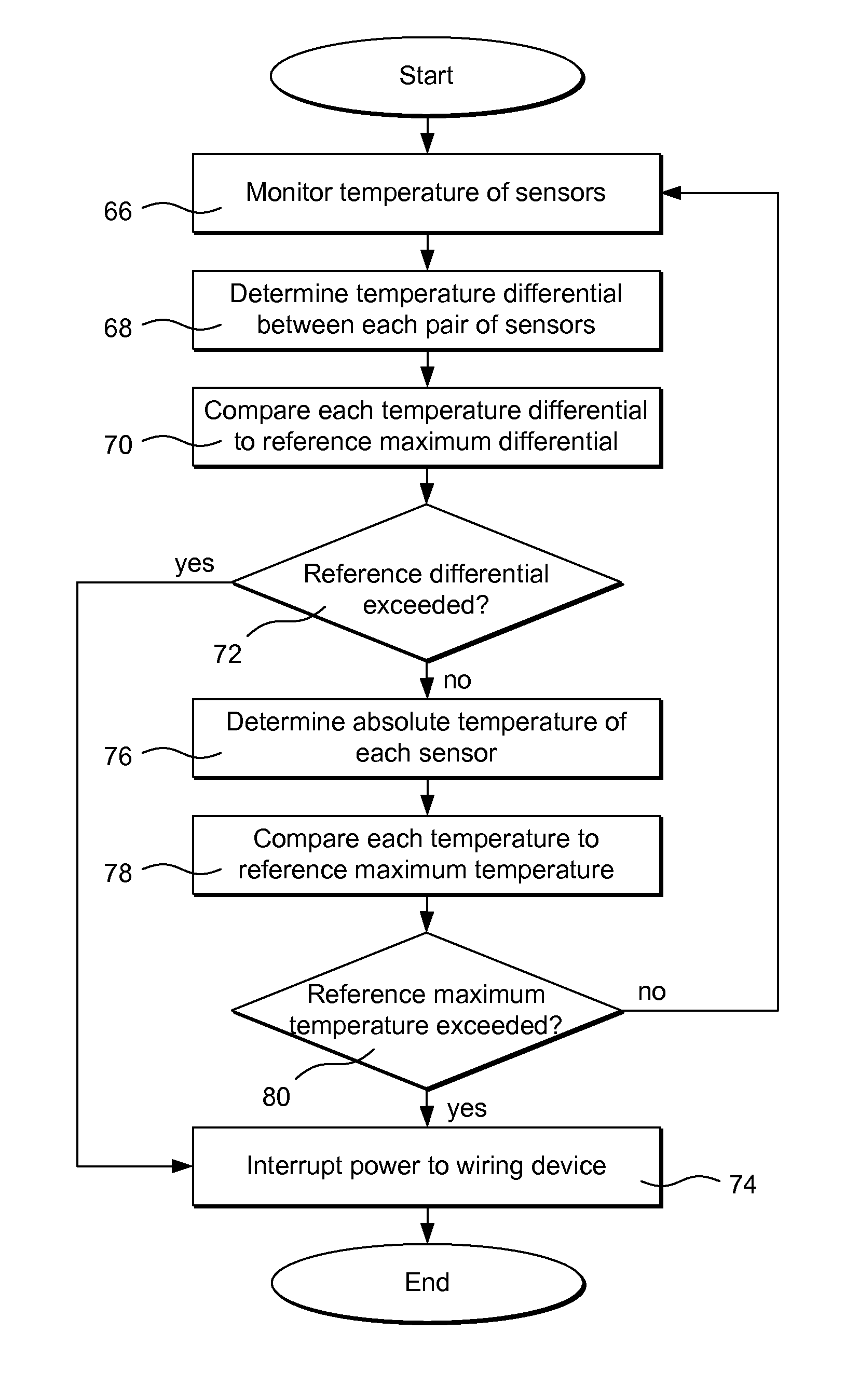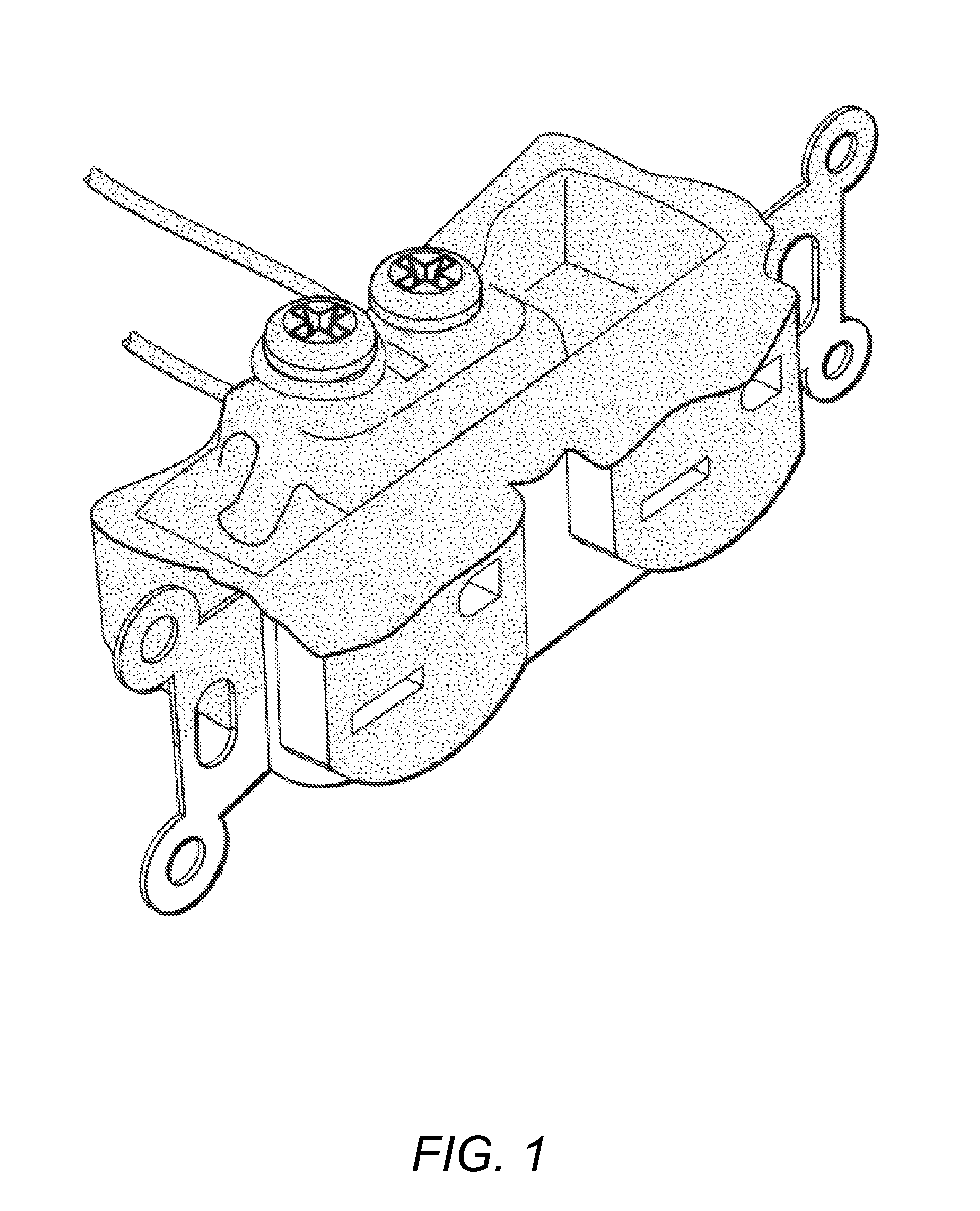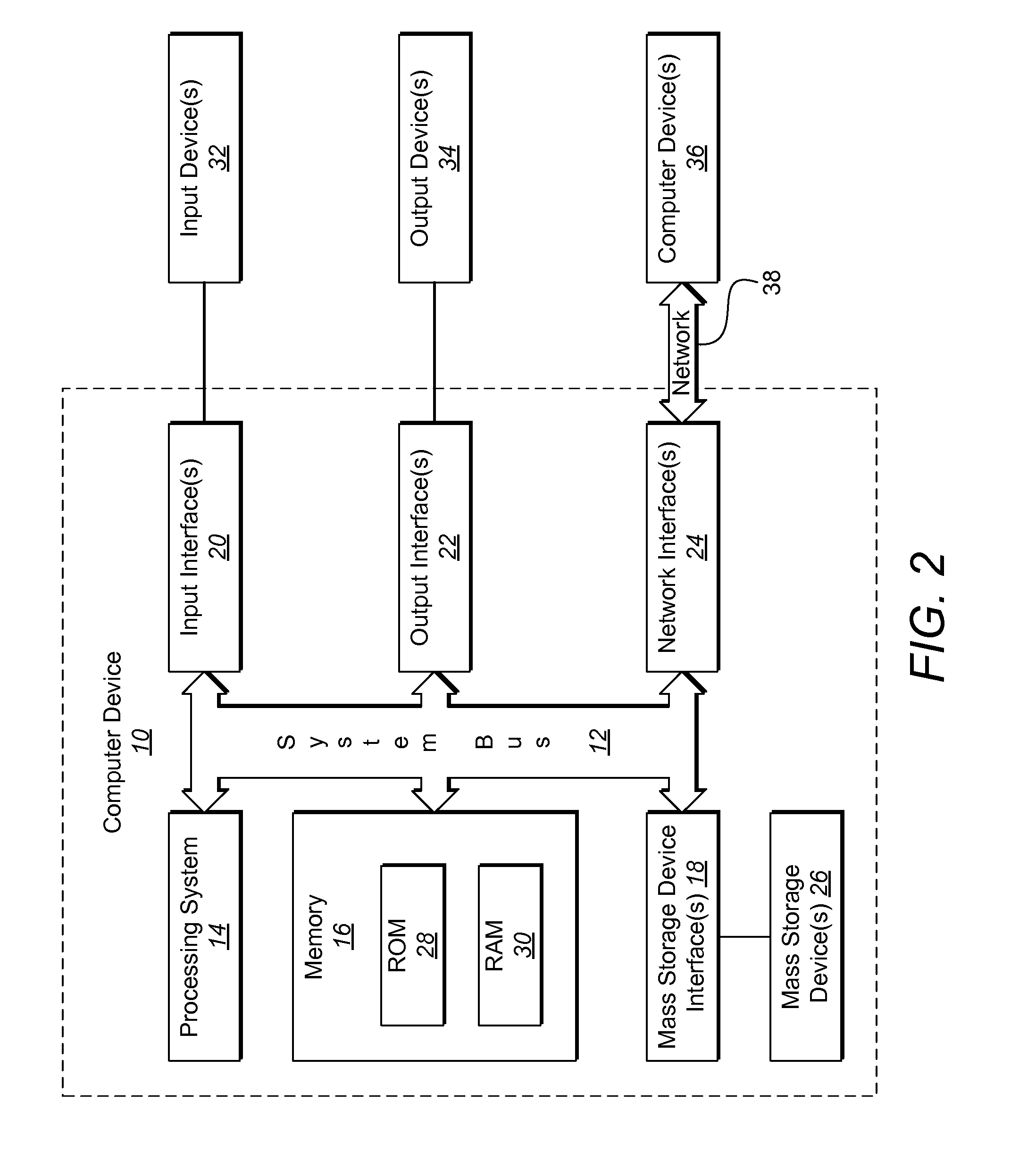Systems and Methods for Detecting Unsafe Thermal Conditions in Wiring Devices
- Summary
- Abstract
- Description
- Claims
- Application Information
AI Technical Summary
Benefits of technology
Problems solved by technology
Method used
Image
Examples
Embodiment Construction
[0028]A description of embodiments of the present invention will now be given with reference to the Figures. It is expected that the present invention may take many other forms and shapes, hence the following disclosure is intended to be illustrative and not limiting, and the scope of the invention should be determined by reference to the appended claims.
[0029]Embodiments of the invention provide improved detection of series fault conditions, and provide improved response possibilities upon detection of such conditions. Some embodiments of the invention utilize electronic temperature sensors such as solid-state sensors and temperature sensors integrated into an integrated circuit. In some embodiments, the electronic temperature sensors are connected to a printed circuit board (PCB) that is connected to supply wire connectors, and in other embodiments they are directly connected to supply wire connectors. In some embodiments, differential temperature sensing, as an alternative to or ...
PUM
 Login to View More
Login to View More Abstract
Description
Claims
Application Information
 Login to View More
Login to View More - Generate Ideas
- Intellectual Property
- Life Sciences
- Materials
- Tech Scout
- Unparalleled Data Quality
- Higher Quality Content
- 60% Fewer Hallucinations
Browse by: Latest US Patents, China's latest patents, Technical Efficacy Thesaurus, Application Domain, Technology Topic, Popular Technical Reports.
© 2025 PatSnap. All rights reserved.Legal|Privacy policy|Modern Slavery Act Transparency Statement|Sitemap|About US| Contact US: help@patsnap.com



